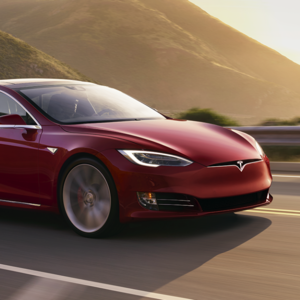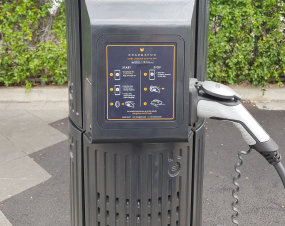With gyms locked down and public transport looking increasingly unsafe, many Aussies have turned to cycling for fitness and socially distant transport in 2020.
So while Victorian roads emptied by 88% in March, cycle paths quietly filled as thousands of new riders took to the streets on their new (or newly restored) bikes. Melbourne paths saw gains across the board from 138% in Koonung Creek to 778% on the Hobsons Bay Coastal Trail.
The rise of the electric bicycle
And to their credit, the City of Melbourne responded relatively quickly, adding 12 km of pop-up cycle lanes by May. And as of this week, 40 km more dedicated cycle lanes have been announced for permanent installation across the CBD, with 228 on-street car spaces to be axed in the process.

Cutting congestion, reducing pollution
While urban drivers may bemoan the loss of already-scarce CBD spaces, evidence suggests that pro-cycling policy reduces road congestion for all road users — including cars. But is this the only way to improve Australian roads as our cities get more and more congested every year?
Well no, and unfortunately it’s not as simple as adding more space for cars. Evidence suggests that more lanes don’t decrease congestion, they increase traffic. Neither do freeways or raising speed limits. All signs point to one thing: to reduce congestion, you need to reduce the number of cars on the road.
Just look at the perennially congested City of London. Hundreds of years of development put space at a premium, and by the early 2000s extra space for cars wasn’t even an option. However, early efforts at a congestion charge were effective: a £5 daily drivers’ fee reduced traffic by 15% between 2003 and 2006, making average trips 30% shorter. But it wasn’t enough.
Pollution, both air and noise, was still making the city centre a nightmare for travellers, workers, and residents, so in 2008 the city implemented a low-emission zone for commercial vehicles. This cut down on the smokiest and loudest vehicles, but progress stalled, and in 2019 Mayor Sadiq Khan bumped the programme once more with an ultra-low emission zone to apply to almost all vehicles, 24/7. Early evidence suggests the ULEZ has reduced inner-city emissions by 20%.
But Australian cities aren’t London, right? We don’t have to worry about vehicle pollution; our air is clean and green. Not cramped into a tight city, but spread over vast, unending suburbs.
Not quite. Even back in 2003, Australia’s death toll due to air pollution was almost double that of road accidents nationwide. Pollution-driven deaths have risen 60% since then to around 5000 annually.
Looking forward
And it doesn’t take a genius to spot the pollution-pumping problem child. In 2018, private cars contributed 52% of land transport emissions in the City of Melbourne, including a disproportionately large share of extra-toxic pollutants thanks to our total lack of fuel efficiency laws. For comparison, Australian vehicles emit about 20% more than their notoriously gas-guzzling American equivalents.
Where are Australia’s fuel efficiency standards
But, once again, the simple solution — banning all cars from CBDs — isn’t likely to fly with most Australians. Extreme policies have a tendency to trip at the electoral hurdle: Hunter S. Thompson’s famous plan to ban all cars from downtown Aspen and turn the streets into “grassy malls where everybody, even freaks, could do whatever’s right” didn’t exactly pan out when he lost his 1970 run for Sheriff.
So perhaps we start small. Incentivise alternative modes of transport: public transit, cycling, scooters and pedestrian traffic. Every non-auto commuter is a car off the road, after all. Then, even without following London’s lead on a congestion charge, we should seriously consider incentivising electric vehicles.
A bright future for electric scooters in Australia
All forms of electrified and human-powered transport have a central role to play in the de-polluting of 21st century cities. Across Europe and Asia, cities have either suffered for their love of combustion or reaped the benefits of an electric/cycling switch.
Some uncertainty
And while Aussies have yet to go all-in on car-free cities, some municipalities have begun flirting with sustainable CBD measures. Melbourne’s bike path program is only the first step toward their Transport Strategy 2030 which, while light on details, makes nods toward many of the aforementioned policies.
“By 2030 we will enable a transition to zero-emissions transport by advocating for lower carbon intensity of motor vehicles and electric vehicles powered by renewable energy in line with the Climate Change Mitigation Strategy 2018”
Similar long-term plans have been released across Australia. Unfortunately there has been very little in the way of specifics. Plenty of “encouraging”, “promoting”, and “supporting”, but also clearly a lot of bet-hedging. Melbourne’s report makes the indecision clear:
“We will be technology-neutral in consideration of zero-emissions technologies. Different technologies which may all have a role to play include battery electric, plug-in hybrid and hydrogen fuel cell.”
— City of Melbourne, Transport Strategy 2030
Evidently a long way to go. In the meantime, it seems Melbournians will just have to put up with the road noise and poor air as they cycle around the city centre. But at least they’re not actively contributing to it.







